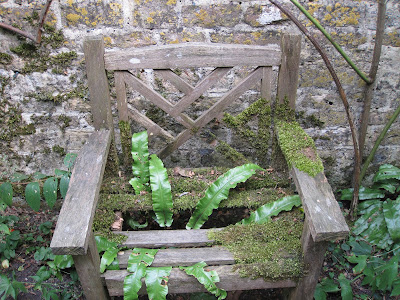GRAND,
but not Grandoise
but not Grandoise
Barnsley House
ROSEMARY VEREY
Sustainable Gardening Fellowship
Royal Oak Foundation
June, July, August 2010
I started out visiting the gardens at castles, palaces, manors, but not houses. When I realized that Rosemary Verey's home was practically down the street from Hidcote, I made an appointment to visit the garden. The house and garden are now a luxury hotel and not open to the public.
Even though the Brits can say SORRY like no one else in the world, the woman on the other end of the telephone was especially cheery and said "come on over."
Verey is one of those horticultural ladies who did everything: garden designer, writer and broadcaster. She was a well-known and well-respected fixture in the gardening world for years. She has been on my radar, but not at the top of my list. After viewing larger and larger properties, I knew it would be a relief to see a garden which would not require a fold-out map. A garden that was part of a home. A garden created in the late 20th century and a garden that was a reinterpretation of a grand tradition of gardening making. I wasn't disappointed.
I have no one way of knowing whether or not the garden at Barnsley House is exactly how Rosemary Verey designed it. If once it became a hotel, aspects of the garden were changed. Still, I felt the garden was pretty much intact and certainly very close to what Verey designed. I loved the intimate scale. Below is the only "feature." A small pool with pavillion, which existed on the property when Verey came to live at Barnsley House.
Most of the garden is a mixture of herbaceous plants combined with clipped boxwood, but low. They are no 10 ft. tall hedges of any kind. You can wander around the garden, notice the plant combinations and see the beginning and THE END.
And you think to yourself, I like that combination. I could do that. It's do-able. I scribbled a few things down. And that's the point. It's a garden made by one good gardener, kind of like you and me.


























































 snap du jour (photo blog)
snap du jour (photo blog)




